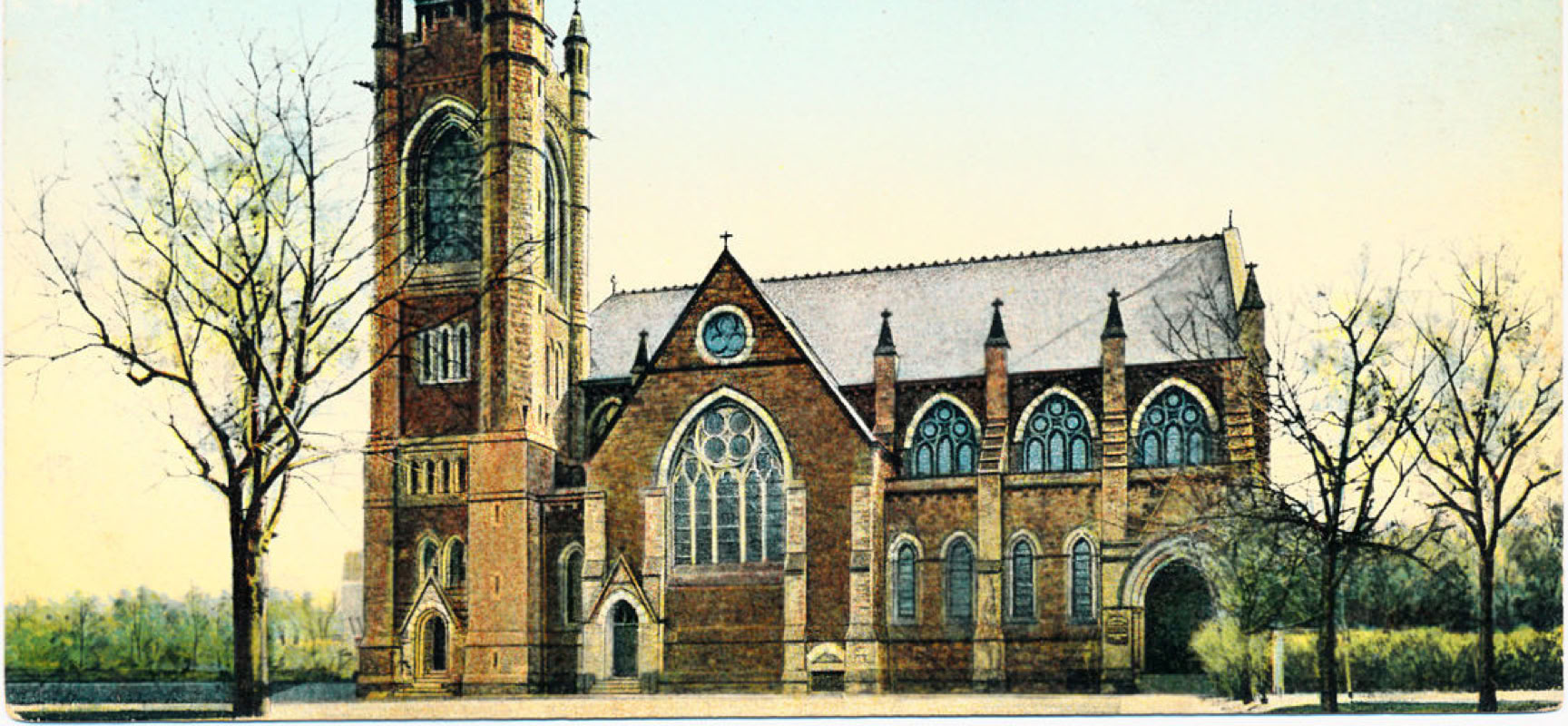
< Main Menu
New York
Grand Opera House
Tuesday, February 7, 1882
The English Renaissance
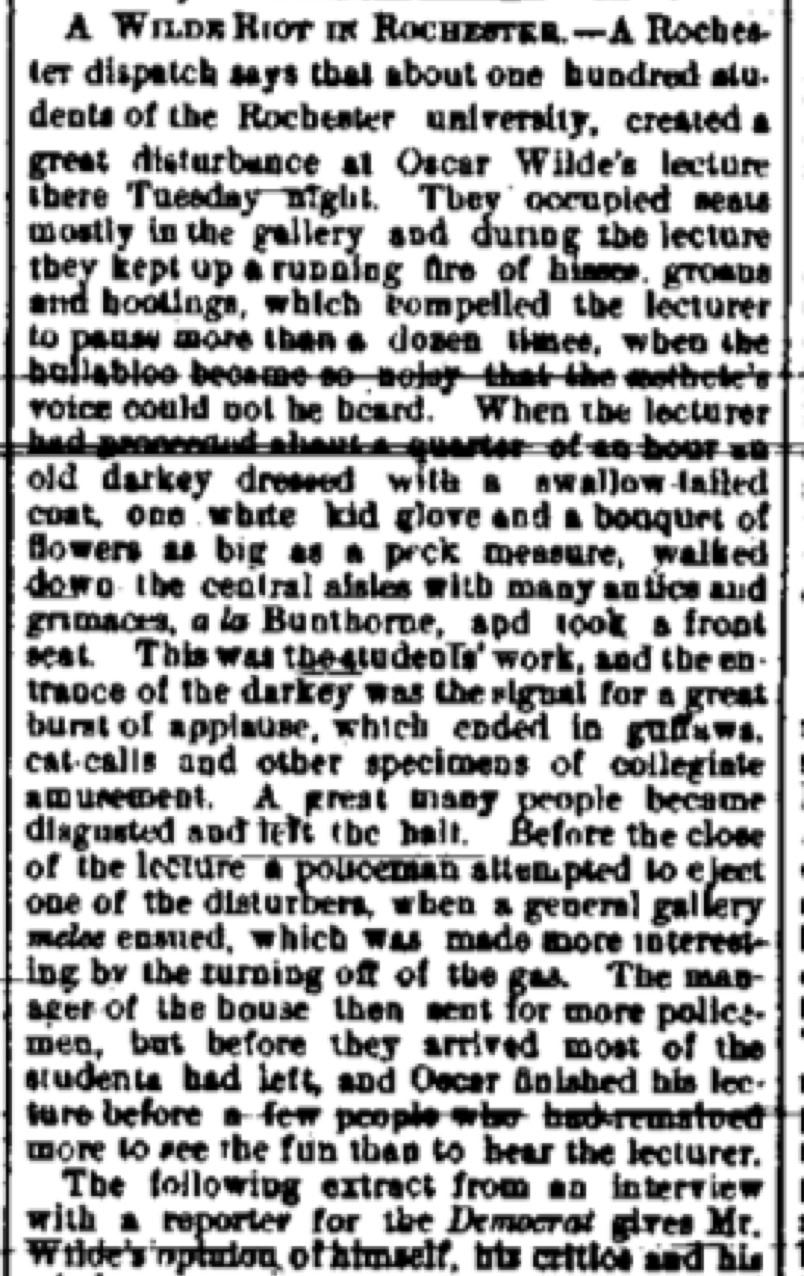
Newspaper report
Utica Weekly Herald, February 14, 1882
Police were called to Wilde’s lecture after students from Rochester University caused a disturbance and had to be ejected.
As to Lecture Subject
Around this time Wilde changed the name and content of his lecture.
Merlin Holland (Complete Letters) describes how Wilde's original lecture was 'too lengthy and theoretical for many in his audience' and that Wilde shortened and retitled it to give it wider appeal.
This explains why the two press clippings on this page indicate different subjects for the Utica lecture.
The new lecture became variously billed as Art Decoration, Decorative Art in America, etc., and it is probable that Wilde adapted them slightly to suit different audiences' (Holland). For this reason all variants of this lectures are listed in this chronology as 'The Decorative Arts'.
But when and where did Wilde switch from The English Renaissance to The Decorative Arts?
In this lecture in Utica conducted 'under the auspices of the 'Household Art Rooms' there are suggestions Wilde had already begun to include material suggestive of a more domestic theme, and the transition does appear to have been an evolution. However, in accepting this, Kevin O'Brien in Oscar Wilde in Canada: An Apostle for the Arts (1982), posits that Wilde delivered The English Renaissance for the last time in Buffalo on February 8 and The Decorative Arts for the first time in Chicago (his next lecture) on February 13. This appears to be a convenient demarcation.
See here for a review of all Wilde's Lecture Titles.
Grand Opera House
S. St. Paul Street (later South Avenue), Rochester, NY
Opened: 1871 (John Rochester Thomas, designer)
Destroyed (fire): February 19th, 1891
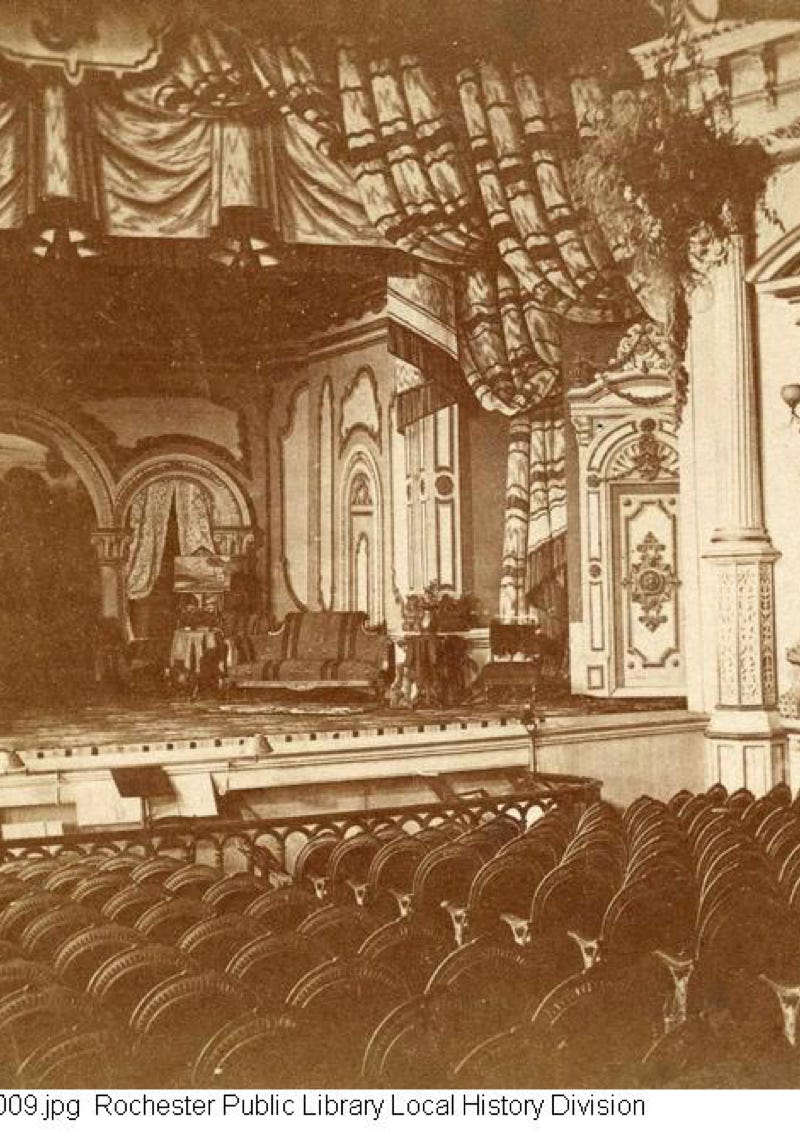
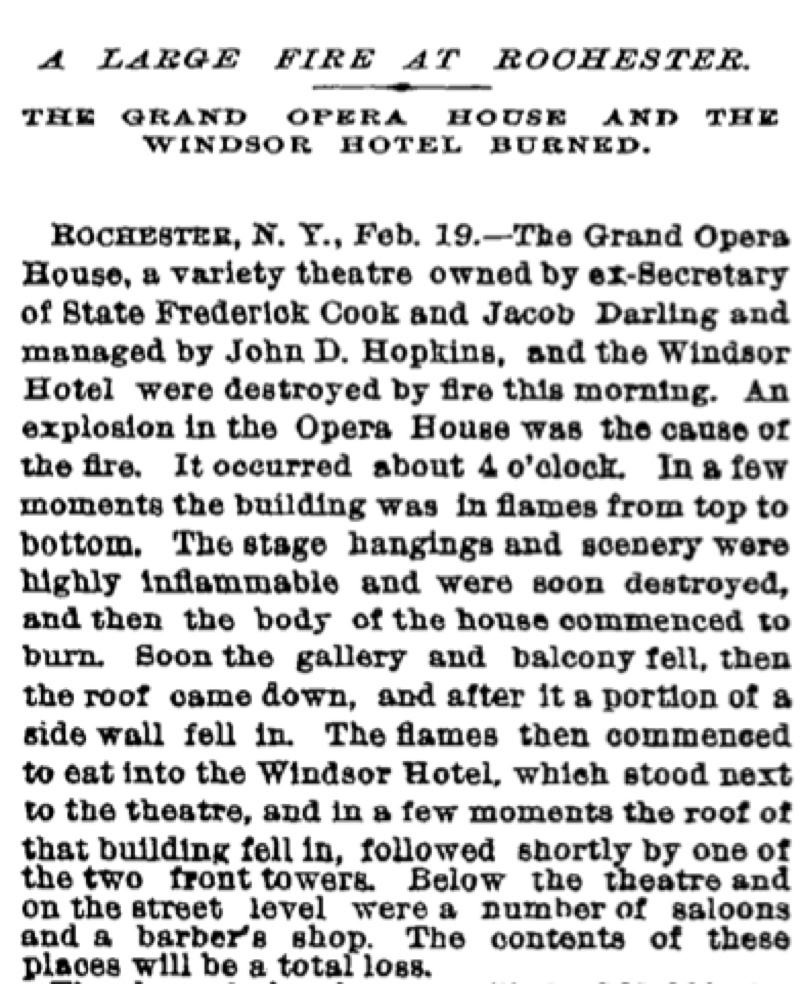
The New York Times, February 20th, 1891
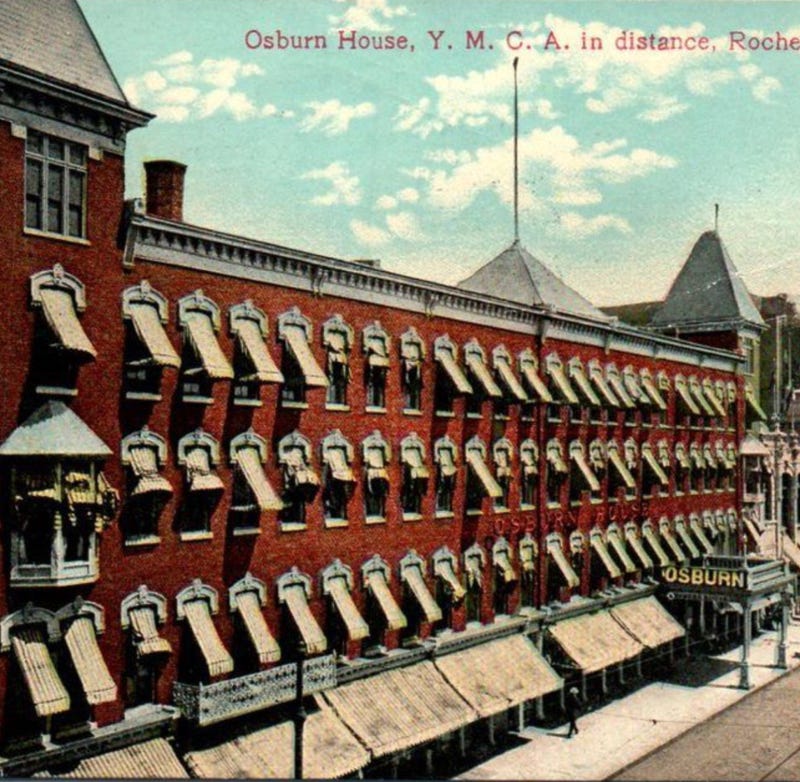
New Osburn House
South St. Paul Street, Rochester, NY
Built: 1880-81
Opened: 1881
Rebuilt and refurnished: 1892-93
Rooms: 194
Demolished: 1959
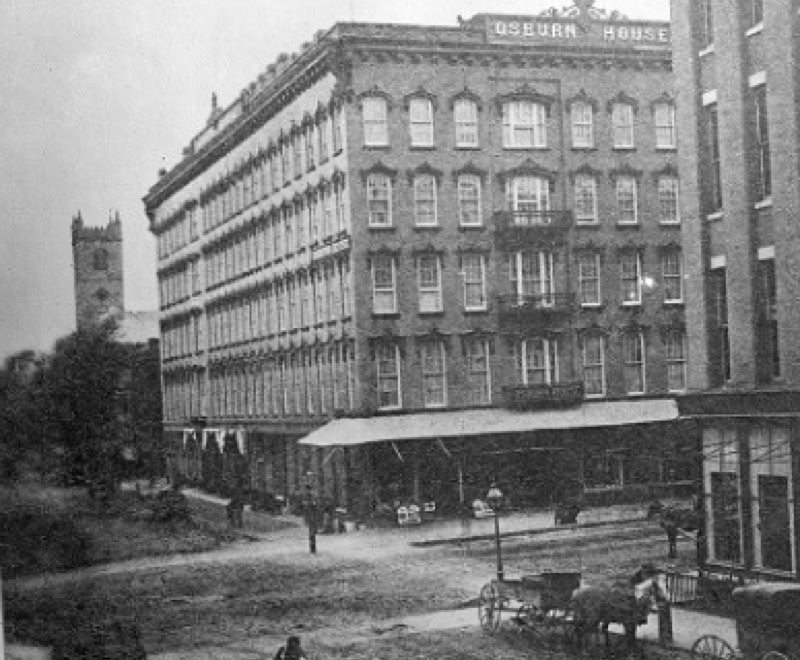
(The first) Osburn House
East Main Street, corner of North St. Paul, Rochester, NY
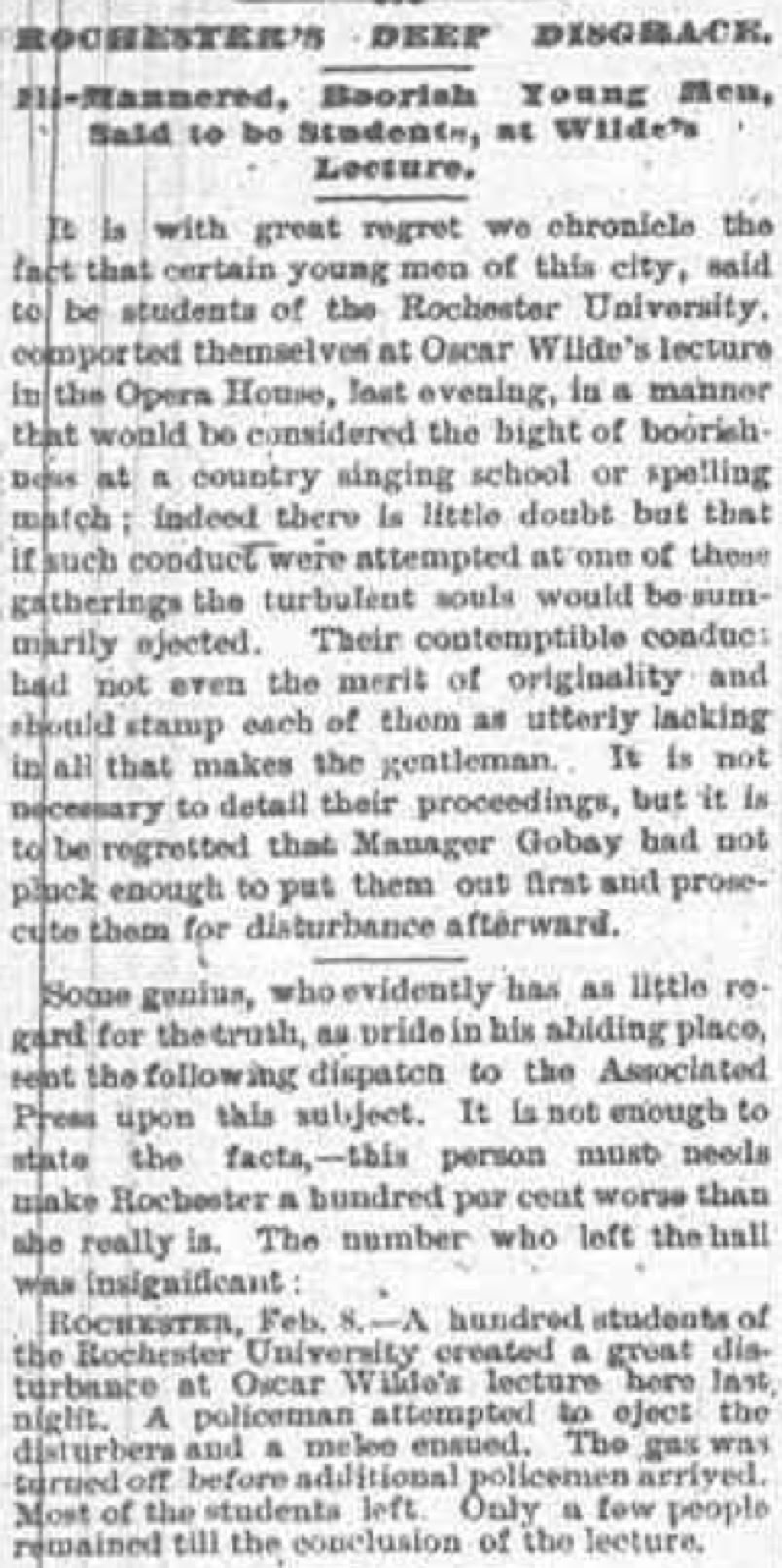
Newspaper report
Rochester Union and Advertiser, February 8th, 1882
In an interview with Wilde printed in the Rochester Democrat and Chronicle, February 8th, 1882, 4, Wilde alluded to ruins and curiosities originally being used in connection with Charles Dickens. See Quotations.